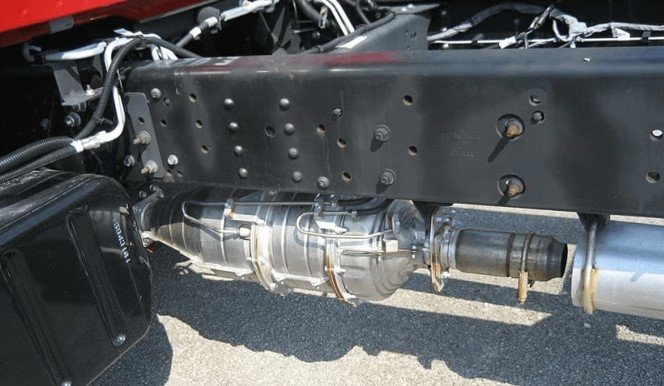A look at the pros and cons of three proposals
Bader Field and the Atlantic City skyline at dusk. Jan. 10, 2023 (JOE MARTUCCI / STAFF DRONE PILOT)
ATLANTIC CITY — Bader Field is the most coveted piece of real estate in the city, which explains why developers are pitching massive projects for it. But while the plans are big, the details have been scant. Developers are keeping information about their financing and market research close to the vest. And he state Department of Community Affairs, which oversees Atlantic City under the state takeover, has refused to comment on how much of an investigation it has done or what it has found. It must approve any potential development. With so much on the line, the Greater Atlantic City Chamber of Commerce and others to have asked the state for a transparent public bidding process to determine what redevelopment happens at Bader Field. But the state won’t comment on that. In a series of articles and follow up meetings, editors and reporters with The Press of Atlantic City met with and interviewed the developers who have sought the land for their project. From those interviews come a list of pros and cons for each proposal, based on their information and critiques of rival plans. The projects are: DEEM Enterprises car-centric development, which the state has been looking into for two years; developer Bart Blatstein’s 10,000-rental-unit development he would build with Post Brothers, and former state Sen. William Gormley’s proposal for parkland and open space. The two high-density developments proposed dangle millions in tax revenue for the city, but both face risks. They would, for example have to be built in stages over about a decade, a period in which conditions could drastically change. The full benefits promised in terms of economic spending, tax payments and ripple effects would take years to realize. Meanwhile, a danger of both proposals would be a developer filing bankruptcy or otherwise being unable to complete all planned construction, leaving many promises unfulfilled. DEEM’s $2.7 billion car-centric development “Renaissance at Bader”
People are also reading…
Developers say the already have the financing to immediately pay city $115 million for the land, and promise to clean up an underground aviation fuel plume on the former airport site. Plan includes 2.4-mile track for residents to drive high performance cars; about 4,000 units of luxury and middle class housing, conference and hotel space, and educational facilities to teach auto maintenance/repair and new energy efficient and storm resistant construction techniques to locals. PROS: Attracting hundreds of new wealthy residents and thousands of middle-class residents to share the tax burden in Atlantic City, which developers claim will slash local tax rate from $3.91 to $1.91 Few students expected to need services from local school district, as most homes expected to be vacation homes Creating a new type of attraction for visitors, to see a unique car-centric development and personal raceway that fits in well in a gaming city New jobs servicing residents with high value sports cars that will need specialized mechanics, and use of new building techniques and materials for flood and wind resistance and energy conservation Hundreds of jobs for people providing services to the new residents, and ripple effect to city and regional economy from bringing in 4,000 new residents and planned convention center, etc. CONS: Extreme density of development would stress infrastructure in surrounding area and require millions in public spending to accommodate traffic and services $2.7 billion in real estate would be built in a waterfront area, subjecting it to possible high losses in an extreme storm Adding thousands of new residents to an area that already has serious flooding problems on Albany Avenue and West End Avenue would increase the need to spend tens of millions to raise nearby roads New housing may encourage residents in the rest of the city to move there, leaving other neighborhoods in worse shape. Some people living in nearby neighborhoods say they fear noise from high powered cars, although the developer says it will use noise canceling technology. “Casa Mar” $3 billion middle class rental community of 10,000 units from Bart Blatstein and partners
Plan includes creation of lagoons to make more waterfront property for 10,000 units of rental housing, a 100-room hotel, a school, 400,000 square feet of retail and office space, and 20 acres of open space for recreation. The developers estimate when fully occupied it will generate three times more economic impact on the area than the DEEM plan, but have not specified how they arrived at that number. PROS: Attracting 20,000 to 30,000 new middle-class renters to Atlantic City will improve its vibrancy and citizen engagement The ripple effect of spending by 20,000+ new residents will benefit city and regional economy, and property taxes paid will help lower tax rate 20 acres of park areas along waterfront would improve quality of life Hundreds of new jobs for people providing services to 20,000+ new residents Rental community and hotel would provide a place outside of older neighborhoods for short-term rentals. CONS: Extreme density of development would stress infrastructure in surrounding area and require millions in public spending to accommodate traffic and services Large influx of year-round residents would increase number of students in school district, resulting in higher costs for education, although developers say they will build their own private or charter school New housing may encourage middle class residents in the rest of the city to move there, leaving other neighborhoods in worse shape $3 billion in real estate would be built in a waterfront area, subjecting it to possible high losses in an extreme storm, especially if new lagoons are constructed bringing water closer to buildings Adding thousands of new residents to an area that already has serious flooding problems on Albany Avenue and West End Avenue would increase the need to spend millions to raise nearby roads City Park as proposed by former state Senator William Gormley
Gormley and others have offered $40,000 to fund a study to come up with a plan for creating a park at Bader Field. He has said the main goal would be to give residents and visitors a beautiful, natural area in which to recreate and relax, and provide a natural buffer to lessen flooding in the area. PROS: Improvement in quality of life for residents of the city and county, with park providing walking trails, kayak and small boat launch, gardens and hundreds of trees Area could provide flood mitigation for surrounding area by acting as a sponge when flooding and storms occur Creation of a beautiful gateway to one entrance to the city Preservation of historic airport site to some degree, and of views across to the city proper as well as keeping future development options open No risk of losing control of a high-value property, then having a developer fail to follow through on complete plan and being left with only a partial pay off of tax funds and new residents CONS: No new source of property tax payments No new middle- or upper- income residents Park would need to be maintained and kept safe, and annual cost of proper oversight could be substantial Homelessness problem could spill over into park City would have liability risk for visitors there.
Bader Field and the Atlantic City skyline at dusk. Jan. 10, 2023 (JOE MARTUCCI / STAFF DRONE PILOT)
ATLANTIC CITY — Bader Field is the most coveted piece of real estate in the city, which explains why developers are pitching massive projects for it.
But while the plans are big, the details have been scant.
Developers are keeping information about their financing and market research close to the vest.
And the state Department of Community Affairs, which oversees the city under the state takeover and must approve any development proposal, has refused to comment.
With so much on the line, the Greater Atlantic City Chamber and others to have asked the state for a transparent public bidding process to determine what redevelopment happens at Bader Field.
The Press of Atlantic City has interviewed the principals who have sought Bader Field for their project.

ATLANTIC CITY — The investors who want to build a $2.7 billion, car-centric community on Bad…
The projects are DEEM Enterprises’ car-centric development, which the state has been looking into for two years; developer Bart Blatstein’s 10,000-rental-unit development he would build with Post Brothers; and former state Sen. William Gormley’s proposal for parkland and open space.
The two high-density developments dangle millions in tax revenue for the city, but both face risks. They would, for example, have to be built in stages over about a decade, a period in which conditions could drastically change. The full benefits promised in terms of economic spending, tax payments and ripple effects would take years to realize.
Here is a look at the three proposals:
DEEM’s $2.7 billion car-centric development ‘Renaissance
at Bader’Developers say they already have the financing to immediately pay the city $115 million for the land. They also promise to clean up an underground aviation fuel plume on the former airport site. The plan includes a 2.4-mile track for residents to drive high-performance cars; about 4,000 units of luxury and middle-class housing, conference and hotel space; and educational facilities to teach auto maintenance/repair and new energy-efficient and storm-resistant construction techniques to locals.

ATLANTIC CITY — A $3 billion 10,000-unit housing proposal for Bader Field would give people …
Attracting hundreds of new wealthy residents and thousands of middle-class residents who would share the tax burden in Atlantic City, which developers claim will slash the local property tax rate from $3.91 to $1.91 per $100 of assessed property value.
Few students are expected to need services from the local school district, as most homes are expected to be vacation homes.
Creating a new attraction for visitors, a unique car-centric development and personal raceway that fits well in a gaming city
New jobs servicing high-value sports cars that will require specialized mechanics. Use of new building techniques and materials for flood and wind resistance and energy conservation
Hundreds of jobs providing services to the new community would create a ripple effect in the local economy
CONS:Extreme density of development would stress infrastructure in the surrounding area and require millions in public spending to accommodate traffic and services.
$2.7 billion in real estate would be built in a waterfront area, subjecting it to possible high losses in an extreme storm.
Development in a flood-prone area on the major access routes of Albany and West End avenues would increase the need to spend tens of millions to raise nearby roads.
New housing may encourage residents in the rest of the city to move there, leaving other neighborhoods in worse shape.
Some people living in nearby neighborhoods say they fear noise from high-powered cars, although the developer says it will use noise-canceling technology.
‘Casa Mar’ $3 billion middle-class rental community of 10,000 units from Bart Blatstein and partnersPlan includes creation of lagoons to make more waterfront property for 10,000 units of rental housing, a 100-room hotel, a school, 400,000 square feet of retail and office space, and 20 acres of open space for recreation. The developers estimate when fully occupied it will generate three times more economic impact than the DEEM plan, but have not specified how they arrived at that number.

ATLANTIC CITY — Mayor Marty Small Sr. entered the room in a light-up robot costume to make h…
Attracting 20,000 to 30,000 new middle-class renters to Atlantic City will improve its vibrancy and citizen engagement.
The ripple effect of spending by 20,000+ new residents will benefit the city and regional economy, and property taxes paid will help lower the tax rate.
20 acres of park areas along the waterfront would improve quality of life.
Hundreds of new jobs for people providing services to 20,000+ new residents
Rental community and hotel would provide a place outside of older neighborhoods for short-term rentals.
Extreme density of development would stress infrastructure in the surrounding area and require millions in public spending to accommodate traffic and services.
Large influx of year-round residents could increase the number of students in the school district, resulting in higher costs for education, although developers say they will build their own private or charter school.
New housing may encourage middle-class residents in the rest of the city to move there, leaving other neighborhoods in worse shape.
$3 billion in real estate would be built in a waterfront area, subjecting it to possible high losses in an extreme storm, especially if new lagoons are constructed, bringing water closer to buildings.
Adding thousands of new residents to an area that already has serious flooding problems on Albany and West End avenues would increase the need to spend millions to raise nearby roads.
City Park as proposed by former state Sen. William Gormley
The former Atlantic County state senator and others are offering $40,000 to fund a study to turn Bader Field into a massive community park, a la Central Park. He has said the main goal would be to give residents and visitors a beautiful, natural area in which to recreate and relax, and provide a natural buffer to lessen flooding in the area.

Two family foundations associated with former state Sen. William Gormley are donating $40,00…
Improvement in quality of life for residents of the city and county by providing walking trails, kayak and small boat launch, gardens and hundreds of trees
Area could provide flood mitigation for the surrounding area by acting as a sponge when flooding and storms occur.
Creation of a beautiful gateway to one entrance to the city
Preservation of historic airport site to some degree, and of the city’s skyline views, as well as keeping future development options open
No risk of losing control of a high-value property if development plans fall short or fail
No new source of property tax payments
No new middle- or upper-income residents
Park would need to be maintained and kept safe, and annual cost of proper oversight could be substantial.
Homelessness problem could spill over into park.
City would have liability risk for visitors there.
What project would you like to see at Bader Field?
GALLERY: Look back at Bader Field in Atlantic City

A Beechcraft takes off at Bader Field Airport, in Atlantic City, in Sept. 1991.

Hlicopters soon replaced planes landing at Bader Field Airport in Atlantic City, May 3, 1989.

Control tower at Bader Field Airport, in Atlantic City, Jan. 25, 1988

Control tower at Bader Field Airport, in Atlantic City, 1988

John Burke was the air traffic controller at control tower at Bader Field Airport, in Atlantic City, Jan. 25, 1988

Plane takes off past control tower at Bader Field Airport, in Atlantic City, May, 1988

Welcome sign at Bader Field Airport, proclaimig it the world’s first airport, in Atlantic City, May, 1989

Atlantic City fire fighters protest at Bader Field Airport, in Atlantic City, Sept. 4, 1983

Atlantic City fire fighters protest at Bader Field Airport, in Atlantic City, July, 1986

Landing past Resorts Casino Hotel at Bader Field Airport, in Atlantic City, Aug. 1987

Planes at Bader Field Airport, in Atlantic City, May 27, 1986

Bader Field Airport, in Atlantic City, undated

NJ Governor Tom Kean is joined by Atlantic city Mayor James Usry for a tour of Bader Field Airport, in Atlantic City, Aug. 1987

Bader Field, in Atlantic City, falls into disrepair by Sept. 4, 1991.

Bader Field, in Atlantic City,is locked up in Nov. 1993

Bader Field, in Atlantic City,is locked up in Nov. 1993

Bader Field, in Atlantic City, 1928

Atlantic City Airport, Bader Field, in Atlantic City, late 1930’s

Atlantic City Airport, Bader Field, in Atlantic City, 1938

Atlantic City Airport, Bader Field, in Atlantic City, April, 1940

Bader Field, in Atlantic City, late 1960’s

Atlantic City Airport, Bader Field, in Atlantic City, late 1960’s

The terminal at Bader Field, in Atlantic City, Jan. 1960

Atlantic City Airport, Bader Field, in Atlantic City, late 1960’s

An exhibition of the newest plans on display at the Airplane Owners and Pilots Association, at Bader Field, in Atlantic City, late 1960’s

An exhibition of the newest plans on display at the Airplane Owners and Pilots Association, at Bader Field, in Atlantic City, late 1960’s

M. Curtis Young,right, president of the Atlantic City Airlines, greets Prof. Eugene Lorrobee, of the Mass. Institute of Technology. on arrival at Bader Field, in Atlantic City,Dec. 8, 1970. Lorrobee ws making a study of short takeoff and landing operations.

Bader Field, in Atlantic City, Jan, 24, 1971.

Aircraft at Bader Field for a convention in Atlantic City, May, 1977

A plane that overran the runway and skidded off Bader Field, in Atlantic City, May 4, 1972

Thousands of union workers picket at Bader Field, in Atlantic City, June 7, 1978

The Goodyear Blimp lands at Bader Field, in Atlantic City, June 27, 1972

Plane lands in the waterway after overshooting the runway at Bader Field, in Atlantic City, Oct. 22, 1976

Bader Field, in Atlantic City, 1980’s.

Plane lands at Bader Field, as seen from Albany Avenue, in Atlantic City, July, 1984

Control tower at Bader Field, in Atlantic City, July 23, 1984

Bader Field, in Atlantic City, March 16, 1980

Bader Field Airport terminal of Allegheny Commuter, in Atlantic City, Sept. 3, 1987

Bader Field Airport terminal a Butler Aviation is damaged by Hurricane Charlie, in Atlantic City, Aug. 18, 1986
REPORTER: Michelle Brunetti Post
609-841-2895
REPORTER: Michelle Brunetti Post
609-841-2895
mpost@pressofac.com





